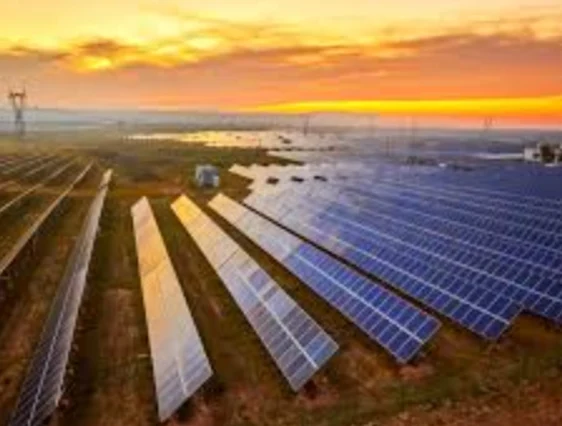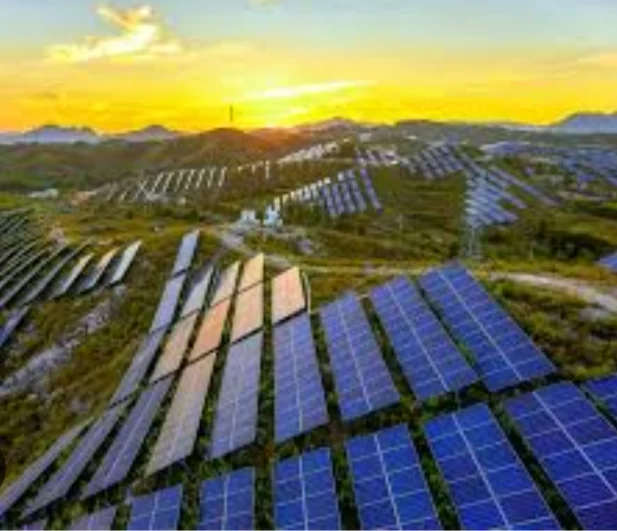The Landscape of Solar Energy in China: A Shining Star in the Renewable Energy Sector
China has emerged as a global leader in the solar energy industry, boasting an impressive landscape characterized by rapid growth, technological advancements, and ambitious goals. Here's a glimpse into the current state of solar energy in China:
Dominating Capacity and Generation:
- World leader: China holds the title of the world's largest producer of solar energy, with a staggering 430 GW of installed solar capacity as of April 2023. This is more than three times the capacity of the United States, the second-ranked country.
- Rapid expansion: The country's solar capacity is growing at an astonishing pace, with over 30 GW added in the first half of 2022 alone. This trend is expected to continue, with China aiming to double its solar capacity by 2025 and reach 1,200 GW by 2030.
Geographical Distribution:
- Desert regions: Due to their abundant sunshine and vast empty spaces, desert regions in northwestern China, like Xinjiang and Qinghai, are home to some of the world's largest solar farms. The Gobi Desert alone hosts the world's largest solar power plant, the Tengger Cavalry Solar Park, with a capacity of 2 GW.
- Shifting focus: Recently, China has initiated the development of "clean energy bases" in its eastern provinces, closer to major energy consumption centers. This aims to address the challenge of transmitting solar power from remote desert regions to densely populated areas.
Technological Innovation:
- Manufacturing powerhouse: China is a global leader in the manufacturing of solar panels, with its companies producing and exporting panels to countries worldwide. This has significantly driven down the cost of solar energy, making it a more accessible and competitive option.
- Research and development: China is committed to advancing solar technology, investing heavily in research and development. This includes efforts to improve the efficiency of solar panels, develop new storage solutions, and explore alternative solar technologies like perovskite cells.
Here's a table with the top 10 solar farms in China, their location, and capacities, with color-coding based on capacity ranges:
| Rank | Solar Farm Name | Location | Capacity (MW) | Color Code |
|---|---|---|---|---|
| 1 | Golmud Solar Park | Qinghai | 2800 | Red (Largest) |
| 2 | Datong Solar Power Top Runner Base | Xinjiang | 3000 (Under construction) | Red (Largest) |
| 3 | World's Largest Capacity Solar Plant in Salt Farm | Tianjin | 1500 | Orange |
| 4 | Huanghe Hydropower Hainan Solar Park | Qinghai | 2200 | Orange |
| 5 | Tengger Desert Solar Park | Ningxia | 1547 | Orange |
| 6 | Longyangxia Dam Solar Park | Qinghai | 850 | Yellow |
| 7 | Xiongan New Area Photovoltaic Power Station | Hebei | 800 | Yellow |
| 8 | Shandong Jining Solar Power Base | Shandong | 700 | Yellow |
| 9 | Ningxia Kubuqi Banner 1GW Photovoltaic Power Station | Ningxia | 640 | Green |
| 10 | Dezhou Photovoltaic Power Generation Project | Shandong | 600 | Green |
Color Code:
- Red: Above 2500 MW (Largest)
- Orange: 1000 - 2499 MW
- Yellow: 500 - 999 MW
- Green: Below 500 MW
China's Solar Energy: A Statistical Powerhouse
China's solar energy journey is a dazzling display of ambition and achievement, with statistics that paint a picture of a sun-powered future. Here's a concise summary of the key figures:
Capacity & Generation:
-
World Leader: China boasts a monumental 430 GW of installed solar capacity as of April 2023, more than triple the US's 139 GW.
-
Rapid Rise: The country's solar capacity is soaring, adding over 30 GW in just the first half of 2022. This growth trajectory shows no signs of slowing, with China aiming to double its capacity by 2025 and reach a staggering 1,200 GW by 2030.
Geographical Distribution:
-
Desert Powerhouses: Sun-drenched deserts in northwestern China, like Xinjiang and Qinghai, are solar havens. The Gobi Desert alone hosts the world's largest solar power plant, the Tengger Cavalry Solar Park, generating 2 GW of clean energy.
-
Shifting Focus: China is now looking eastward, developing "clean energy bases" closer to major energy-hungry cities in its eastern provinces. This strategic move aims to bridge the gap between remote solar generation and bustling consumption centers.
Technological Prowess:
- Manufacturing Muscle: China reigns supreme in solar panel production, churning out and exporting panels to the world. This has drastically reduced costs, making solar energy a more attractive and affordable option.
- Innovation Hub: China is committed to pushing the boundaries of solar technology, heavily investing in research and development. This includes advancements in solar panel efficiency, storage solutions, and exploring alternatives like perovskite cells.
Challenges & Opportunities:
- Grid Integration: Integrating vast amounts of intermittent solar power into the grid is a complex puzzle. China is tackling this by developing energy storage solutions and implementing smart grid technologies.
- Sustainable Footprint: Large-scale solar projects have raised concerns about land use and water consumption. China is addressing these issues by adopting sustainable practices and developing more efficient solar technologies.
Beyond the numbers, China's solar energy landscape represents a beacon of hope in the global fight against climate change. The country's unwavering commitment to solar power sets a shining example for the world, paving the way for a brighter, cleaner future powered by the sun.
China's Solar Energy Landscape
China's Solar Energy Landscape: A Dazzling Array of Statistics
| Metric | Data | Details/Notes |
|---|---|---|
| Installed Capacity (April 2023) | 430 GW | World leader, over triple the US's 139 GW |
| Growth Rate (H1 2022) | 30+ GW | Rapid expansion, aiming to double by 2025 and reach 1,200 GW by 2030 |
| Top Provinces - Capacity | Xinjiang, Qinghai | Sun-drenched deserts, home to the world's largest solar power plant (Tengger Cavalry Solar Park, 2 GW) |
| New Strategy: | Clean energy bases in eastern provinces | Bridging the gap between remote generation and city consumption |
| Solar Panel Manufacturing: | Global leader | Reduced costs, making solar more affordable |
| Technological Innovation: | Heavy R&D investment | Focus on improving efficiency, storage solutions, and alternative technologies like perovskite cells |
| Challenges: | Grid Integration, Sustainable Footprint | Developing storage solutions, smart grids, and sustainable practices |
I hope this updated table with colorful title and subtitle provides a more visually engaging and informative representation of China's solar energy statistics!
Challenge
- Grid integration: Integrating large amounts of solar power into the grid presents a challenge due to its intermittent nature. China is investing in energy storage solutions and smart grid technologies to overcome this hurdle.
- Environmental impact: Some large-scale solar projects have raised concerns about their environmental impact, such as land use and water consumption. China is working on mitigating these impacts by implementing sustainable practices and developing more efficient solar technologies.
The landscape of solar energy in China is one of remarkable progress and immense potential. The country's leadership, technological advancements, and ambitious goals position it as a driving force in the global transition to a clean energy future.




